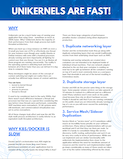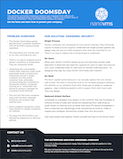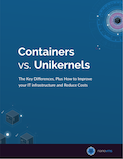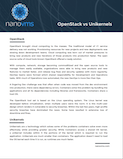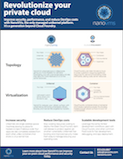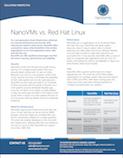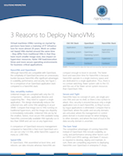Unikernels Are Fast
Unikernels can be a much faster way of running your application than using Linux - sometimes as much as 300% faster. Why? Unikernels derive the majority of their performance from their single process but multithreaded architecture.
Docker DoomsDay
The Docker Doomsday exploit, aka the RunC container breakout, CVE-2019-5736 is being actively exploited. The bug allows any remote user to run any command as root. Get the facts and learn why there is no way to properly secure a container.
Containers vs Unikernels
When it comes to improving your IT infrastructure, there is often confusion between containers and unikernels. There are key differences between the two when it comes to performance, security, and cutting down on infrastructure costs. Let’s take a look at the two technologies to discover which is the best choice for your company.
OpenStack vs Unikernels
The OpenStack tool set is based on the Linux operating system. The Linux kernel was developed before virtualization, when multiple users were the norm. It is this multi-user design which renders it vulnerable to security breaches. Within the last few years, high-profile security breaches have dominated the news. Some have resulted in extensive loss of downtime and fines.
NanoVMs vs. Cloud Foundry
Cloud Foundry can take minutes to hours to scale a platform requiring significant resources for demand forecasting while inefficiently utilizing costly server resources.
NanoVMs vs. Red Hat Linux
As a next generation cloud infrastructure unikernels can improve performance and security while reducing the need for costly servers. NanoVMs offers a production-ready unikernel platform that enables organizations to run their applications faster, safer and with less cost NanoVMs can offer significant advantages over Red Hat Linux in security, performance and scalability.
3 Reasons to Deploy NanoVMs
Virtual machines (VMs) running on myriad hypervisors have been a mainstay of IT infrastructure for more almost 20 years. Work on unikernel-based VMs started around the same time – they differ from traditional VMs in that they have much smaller image sizes, less impact on hypervisor resources, faster VM load/execution times and more secure operating environments for business-critical applications.
Intel Meltdown
The Meltdown attack against Intel and other processor manufacturers have forced many organizations to choose between security and performance and affects computers as old as a decade. Get the facts and learn how to protect your company.
Equifax Pain
Equifax suffered from one of the most damaging cybersecurity breaches ever: 143 Million Americans’ personal information compromised. Get the facts and learn how to protect your company.
